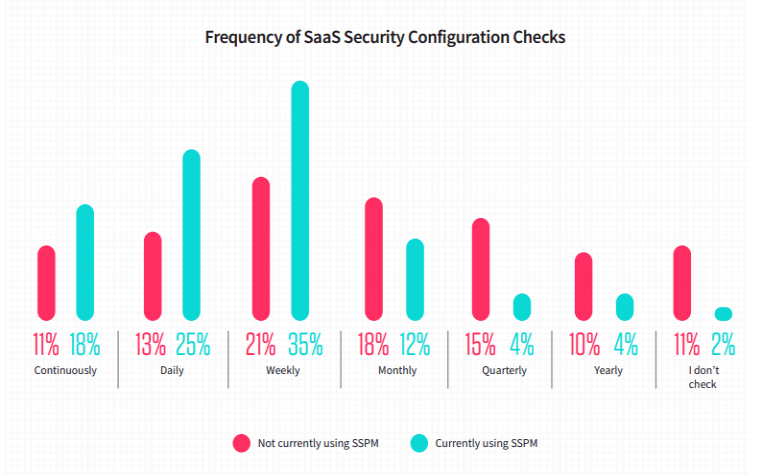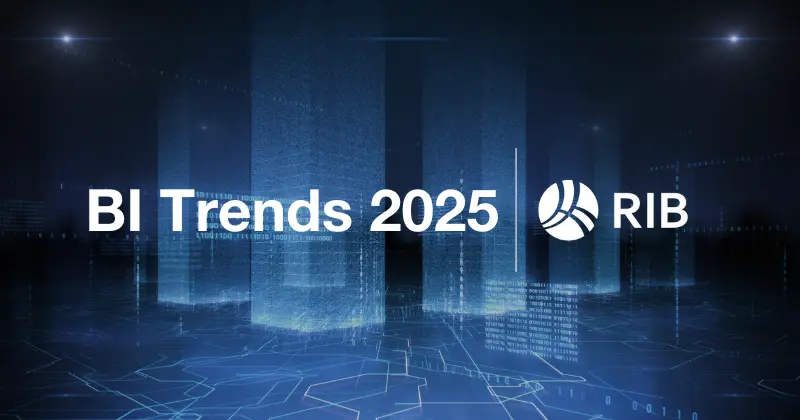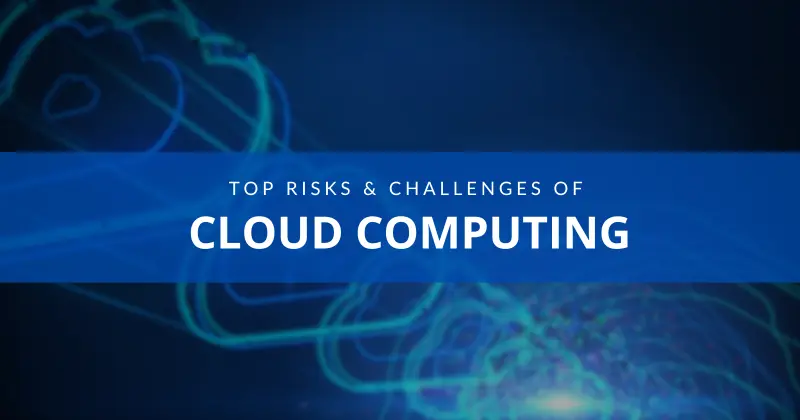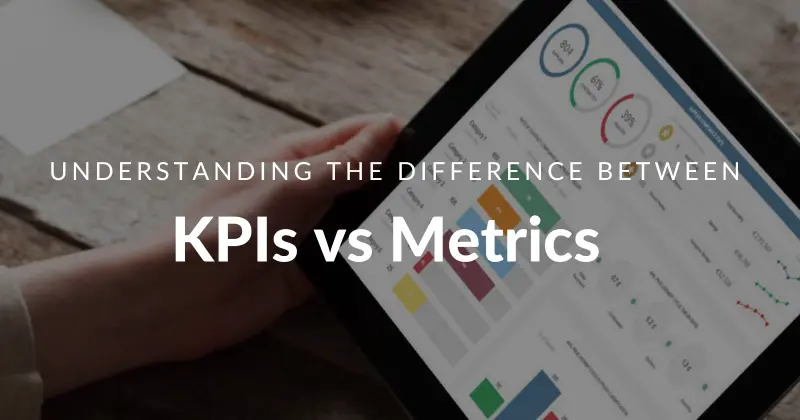11 mins read
The 13 Essential SaaS Trends You Should Watch Out For In 2025

Software-as-a-service (SaaS) is becoming an increasingly popular choice for construction organizations in search of accessibility, functionality, and versatility in a competitive and dynamic business environment.
Companies in the construction industry are now using SaaS software solutions and online data analysis more frequently, rather than installing and running applications on their own computer systems and data centers. Current SaaS trends make it clear that these incredible innovations are gaining popularity every year.
SaaS now dominates the cloud computing market. Gartner predicts worldwide spending on public cloud services will reach $723 billion in 2025 – a level of growth that is certain to influence construction software-as-a-service trends and adoption in the coming year.
SaaS is a software distribution model offering agility and cost-effectiveness for companies, making it an incredibly reliable option for numerous business models and industries, including construction. More and more companies are discovering how the simplicity, user accessibility, security, and widespread connectivity of SaaS can lead to tremendous operational advantages. Software-as-a-service platforms streamline business models to maximize efficiency across the board.
2024 was a breakthrough year for the SaaS world in many ways, and 2025 will bring more of the same. In this article, we’ll explore 13 essential SaaS trends that are pushing the market even further. We will also discuss some general characteristics revolving around the industry that will help to shine more light on the SaaS trends of 2025.
Rest assured, we’ll soon be digging deeper into game-changing software-as-a-service concepts. But before we review our top SaaS industry trends for 2025, let’s dispel some common myths surrounding the market.
Dispelling 3 Common SaaS Myths
To offer you a full and panoramic understanding of the impact software-as-a-service is having on the professional world and get the full context of the latest SaaS trends and opportunities, we will dispel the three most common SaaS myths – consider them busted:
- SaaS tools offer just one application: On the contrary, SaaS tools range in form and function as much as any other type of software available today. You can find a SaaS cost estimation software or a SaaS project management software, for example.
- SaaS is less robust and less secure than on-premises applications: Despite some SaaS-based teething problems or technical issues reported by the likes of Google, these occurrences are incredibly rare with software-as-a-service applications – and there hasn’t been one major compromise of a SaaS operation documented to date.
- IT professionals are anti-SaaS: Again, this is a complete myth. Much like any other new development, some IT professionals were reluctant to embrace SaaS industry trends. Today, experts appreciate SaaS for eliminating the daily humdrum of traditional software while helping them better manage their own IT operations.
This quote from Apple’s prolific founder, Steve Jobs, sums up the common view of SaaS from a technical professional’s perspective: “I don’t need a hard disk in my computer if I can get to the server faster…carrying around these non-connected computers is byzantine by comparison.”
SaaS: The Key Characteristics
Before we explore our essential software-as-a-service trends for 2025, it’s important to consider the characteristics that define SaaS as not only a technological development but as an effective business model.
- Flexible payment options: Businesses no longer need to go through the expense of purchasing both software and hardware. Instead, they have the option to utilize various software pricing structures. Flexibility in payment models, where they only pay for the resource usage they need, is attractive for many organizations in today’s competitive world.
- Scalability: Cloud-based SaaS enables organizations to expand easily due to its inherent scalability. Companies can also be selective about the types of features and options they want.
- Updates: SaaS providers handle the necessary software updates and develop innovative features over time, so businesses don’t need to invest time or resources in this area of their operation.
- Accessibility: With SaaS, companies have the mobility to access applications from any digital device and location, which makes it especially convenient for mobile platforms. Additionally, it boasts ease of use and is user-friendly.
- Adaptability: Due to the seemingly limitless level of scalability, accessibility, and insight SaaS innovations offer, companies that use such tools or platforms become far more adaptable to industry changes or unforeseen organizational roadblocks.
- Increased collaboration: SaaS developments enhance a business’s ability to promote collaboration across teams and departments due to the facilitation of file sharing, which makes it easier to read and understand documents and records across different systems and locations.
- Security: Most SaaS models are known for their enterprise-level security, which is a more holistic approach to security than many centralized, on-premises solutions. In Cloud SaaS, pre-existing disaster recovery protocols are in place to manage potential system failures. This means your business’s data remains available and secure even if there is a breach or system failure.
As businesses continue to rely on innovative data discovery tools and technologies to increase both their productivity and their efficiency, and new software-as-a-service trends continue to emerge, this young, groundbreaking industry can only go from strong to stronger.
Published forecasts and predictions for SaaS industry trends in 2025 demonstrate an obvious reality: the SaaS market will continue to expand. Indeed, according to SkyQuest, the global SaaS market size is projected to grow at a CAGR of 13.7% through 2031.
This will result in a market value of US 829.3 billion, nearly three times the value of US 296.9 billion in 2023, hinting at the incredible SaaS market trends and growth trajectory we are witnessing. According to Gartner, the global public cloud service market is also projected to grow significantly in 2025 and beyond.
Without further ado, let’s dive into the most important trends of the SaaS industry for the coming year!
The Top 13 SaaS Trends In 2025

Now that we’ve explored the key characteristics of software-as-a-service innovations, it’s time to take a deeper dive into the top SaaS trends of 2025.
From artificial intelligence to edge computing and beyond, these SaaS trends continue to reshape the sector.
1) Artificial Intelligence
Once again, topping our list of impactful trends in SaaS is something of the autonomous, self-learning variety.
Today, Artificial Intelligence (AI) is deep-rooted in the veins of our society and is fast becoming a standard SaaS industry fixture. Autonomous innovations empower organizations across industries with their ability to drive greater product, service, or content personalization while gaining a deeper, data-driven understanding of the needs of their audience. The perfect storm of more return for less input means that with AI, businesses can become more efficient and more intelligent with fewer resources.
AI technology continued to develop significantly in 2024, especially with Generative AI (GenAI). Several SaaS organizations have turned to this technology to improve their service. For example, after the global impact caused by ChatGTP, the online design tool Canva introduced a feature that allowed its users to create designs using AI. Other industries are diving into this technology, with software maker Monday.com launching several GenAI-related features through their Monday AI platform. Salesforce is another big company that has leaned into GenAI with “Einstein Copilot,” an AI bot that is able to help customers complete several tasks. Taking all this into account, it is no surprise that AI is set to become a real game-changer, with a projected market value of $1,812 billion by 2030.
Within business scenarios, artificial intelligence (as well as machine learning, in many cases) provides an advanced degree of responsiveness and interaction between businesses, customers, and technology, driving AI-based SaaS trends in 2025 to the next level.
Numerous features have been developed by modern software providers based on artificial intelligence, such as data alerts. With an AI algorithm using the most advanced neural network for anomaly detection and a machine-learning algorithm for pattern recognition, these alerts learn from trends and patterns and let you know as soon as something important happens.
This way, when a pre-set goal is met or something unexpected happens, you will be notified, enabling you to keep continuous control of your operations. Since it is easy to lose track of what matters when so many KPIs must be monitored, an online reporting tool will safely monitor your data stream and alert you when it veers off course.
Artificial intelligence is impacting the future of SaaS in many ways, improving the key characteristics of the SaaS model across the board. When SaaS is combined with AI capabilities, it enables businesses to obtain better value from their data, automate and personalize services, improve security, and supplement human capacity.
How is AI helping to build a shining SaaS future?
- Personalization: Software is easier to use with technologies such as natural language processing (NLP), which automatically processes human speech patterns and voice control. This is being incorporated into customer service functionality to improve customization and better address client needs.
- Speed: Artificial intelligence-enabled SaaS speeds up internal processes and operations, allowing organizations to obtain answers to questions faster, forecast quickly, and speed up their overall level of responsiveness.
- Security: Due to artificial intelligence-enabled automation and the ability of machine learning to recognize patterns, SaaS security is enhanced by the quick identification and remedy of potential threats and built-in self-recovery.
- Data Intelligence: The sophistication of modern SaaS-based AI platforms makes it possible to investigate emerging consumer intents, interests, and behaviors while consolidating invaluable data from various sources and cleaning and segmenting it in a way that offers optimum organizational value.
- Integrations: In 2025, we’re likely to see AI technologies integrated with an even broader range of software types. This will enable creating highly value-driven infrastructure that offers business-boosting value across almost every internal function and department imaginable.
All things considered, it is not a surprise that AI will remain one of the most relevant SaaS trends in 2025. AI is helping to revolutionize the SaaS landscape in many ways. By extracting autonomous insights that can be applied across several areas, including customer experience, product development, financial predictions, and much more, SaaS providers are able to improve their offerings and use AI technologies to become more intelligent and successful with less effort and cost.
In 2025 and beyond, we will see significant growth in AI-focused software and the introduction of AI technologies and features into existing SaaS solutions to improve their overall functionality. As more and more software incorporates AI, more feedback will be gathered to support developers working on the next innovative AI-powered solutions.
Among the many innovations and technologies powered by AI, machine learning is certainly one of the most important.
Machine Learning
Machine Learning (ML), a subset of AI, is utilized in SaaS to automate customer service reports and applications, sometimes using responsive AI-powered chat operations and live chatbots. ML also helps to automate the onboarding process of SaaS while providing an autonomous operational model to support workflow automation throughout all facets of the business.
ML innovation will continue to empower SaaS-style offerings to become self-improving, offering a level of intelligence and operational efficiency that will drive many industries to new heights.
Machine learning is one of the fastest-growing segments of software, making it one of the hottest SaaS topics of 2025. As ML becomes an integral part of the AI-based software-as-a-service model, an increasing number of platforms will emerge that will help businesses across sectors to:
- Train their software to learn from every task or interaction, gaining a greater level of intelligence and efficiency in the process.
- Dig deeper into contextual data and insights – the kind that can help you gain a real competitive edge.
- Improve internal collaboration and operations through more sophisticated communication models.
- Enhance consumer communications and service output by continually adjusting language, tone of voice, and practical functions in line with the ever-changing needs and demands of clients, partners, or customers.
On a highly commercial level, Netflix’s personalized content suggestions and Waymo’s self-driving cars that calculate increasing potential risk factors or journey hold-ups over time are examples of ML in SaaS-type models. As we enter 2025, these innovations will prove to be the tip of the automation iceberg.
2) The Construction Industry Moves to SaaS
While SaaS is well established in some industries, including marketing and business intelligence (BI), some industries have not embraced digitalization as fast as others. Construction is one area where many traditional practices and tools quickly become obsolete, especially as the industry becomes more competitive.
Luckily, industry decision-makers are realizing the value of digital construction and focusing their investments in cloud SaaS technology to boost project management from preconstruction planning to handover.
Construction SaaS has many benefits, including accessing all project data in real-time, from any device with an internet connection, making it easier for project stakeholders to collaborate onsite and offsite. Some of the tangible benefits of construction SaaS companies include:
- Better cost management: Thanks to automation, smart SaaS technologies can provide businesses with more accurate cost estimates in construction projects. This helps to prevent budget overruns and makes the project and company more financially successful.
- Better project management: The power provided by construction cloud software helps project managers plan schedules, allocate resources, and track progress to ensure the project is finished on time and within budget. This is made possible through automation, real-time data access, and the centralization of all processes into a single SaaS environment.
- Improved collaboration and productivity: SaaS’s online nature enables construction teams to work simultaneously on projects with real-time data access and the ability to share updates easily. This level of collaboration reduces project delays, avoids unexpected errors and expenses due to misunderstandings, and significantly boosts construction productivity.
- Improved security and compliance: Construction SaaS platforms offer powerful security features, including robust encryption, access controls, and data backups that keep construction projects fully protected and secured. This gives the different construction roles more time and confidence to focus on their core activities.
- Mobile access: Construction project processes happen mostly on-site, making mobile access fundamental to sharing updates and other relevant information. SaaS construction tools can be accessed from any device with an internet connection, allowing contractors to capture data onsite and send it to the rest of the team immediately.
- Enhanced integration: Construction companies were once reluctant to go digital because many existing systems had to be integrated to ensure an efficient project workflow. SaaS construction platforms offer full integration capabilities to connect different software and systems, such as integrating project management tools with Building Information Modeling (BIM), accounting, and HR platforms.
In 2025 and beyond, we can expect to see SaaS emerge as one of the most powerful tools for efficient project management in construction. Decision-makers need to be smart about their software investments to ensure they can turn them into competitive advantages.
3) SaaS security as a priority
In 2024, the construction industry continued to experience data breaches and cybersecurity attacks that left lingering security concerns for the coming year. Ransomware has become one of the biggest emerging threats, with a 41% rise in events over the previous year. These trends in SaaS industry security also permeate businesses outside of construction around the globe, with many organizations turning to modern technologies and processes to ensure a more secure environment across the board. This will continue to influence the SaaS market in 2025, as the cloud is subjected to various security threats and risks that must be addressed.
SaaS misconfiguration is a key security issue for cloud businesses. Almost 23% of cloud security incidents are the result of cloud misconfiguration. A lack of visibility into changes in the SaaS security settings and unrestricted access to these settings are among the primary causes of these issues.
Automation is expected to help security teams feeling the increased burden of SaaS security. That said, only 26% of surveyed organizations are using this type of technology. The rest still rely on manual methods to assess security and remediate misconfigurations. This increases exposure when manual checks are completed monthly, and misconfiguration issues can go undetected for weeks before being caught.
SaaS Security Posture Management (SSPM) tools provide automated continuous monitoring of SaaS applications to minimize configuration and security issues and stay compliant. Software-as-a-service companies that rely on SSPM can reduce the impact of a security breach by performing security configuration checks in real time. The chart below compares companies using the technology to those that don’t.

**Source: Adaptive Shield**
Misconfiguration is just one of many security concerns that is being discussed in the SaaS industry. Among other issues, we find the growing number of apps connected to a company’s SaaS environment to be another potential threat. These apps are often connected by employees without the awareness of their IT or security teams, granting access to corporate data that leaves the organization exposed. All of this makes investing in security a top priority for SaaS businesses that want to thrive in 2025.
4) Micro-SaaS
Until now, household names like Google, Microsoft, and IBM have dominated the SaaS market, which shouldn’t be a big surprise. Competing with these companies head-to-head has been difficult for small companies and startups trying to break into the SaaS market. The best opportunities for new players come from creating SaaS products designed to complete a unique function. These companies dedicate the time and resources at their disposal to focus on very specific customer problems. That is the basic idea behind micro-SaaS.
Much like vertical SaaS was designed to meet the needs of a specific industry or niche; the micro-SaaS model has several advantages over conventional SaaS that favor smaller and more nimble companies. Micro-SaaS products are generally easier and faster to create, test, and release since the feature sets are smaller and more targeted.
The simplicity also removes barriers to entry since even a team consisting of just a few developers can create and launch a new micro-SaaS product without a lot of overhead or regulatory hurdles to overcome. However, like all other SaaS offerings, cloud computing still provides a convenient source of updates and scalability for micro-SaaS.
Despite the positive micro-SaaS trends, this segment is not without risks and pitfalls. Since these products are geared towards a very specialized niche, their lifespan can be limited as industry trends and best practices change. At the same time, larger and more established SaaS providers may decide to incorporate features that quickly make the micro-SaaS products obsolete. For example, a large project management tool might integrate features similar to smaller task management tools. Since many micro-SaaS providers rely on a single product for their livelihood, these scenarios can potentially upend their operations, so they must continue to innovate in other areas.
The construction industry will continue to embrace the benefits of micro-SaaS in 2025 as more purpose-built solutions arise to improve construction safety management, efficiency, and profitability. Specialized construction software offerings are gaining popularity for everything from takeoff and estimation processes to equipment and safety inspection tracking.
5) Data-as-a-Service (DaaS)
Essentially, data-as-a-service (DaaS) is a term used to describe cloud-based software for data management processes such as data collection, storage, integration, and analytics. This allows organizations to reduce the time needed to make important strategic and operational decisions and increase the quality and reliability of their data. Plus, it significantly decreases the time and costs of setting up data tools and processes across the organization, as cloud BI tools are much easier to set up than on-premises alternatives.
As with all other cloud-based disciplines, DaaS offers users secure on-demand access regardless of location or device. This has been especially useful as organizations have struggled to collaborate in online environments over the past several years. These conditions positively impacted the global DaaS market, expected to grow at an impressive CAGR of 28.1% from 2024 to 2030.
As the market becomes more competitive in 2025, DaaS tools will continue to develop new features that will make data usage more efficient and secure for companies in all industries. Grand View Research cites DaaS integration with edge computing as one of the main market drivers in the years ahead, along with the growing demand for AI-powered analytics and the ability to process large, complex data sets. RIB software offers easy access to multiple BI features through our powerful solution, RIB BI+, including dashboard reporting, alerts powered by artificial intelligence, real-time data access, report sharing, and much more.
As good as this sounds, DaaS providers will continue to face challenges that must be addressed to offer high-quality products, and security is at the top of the list. Since DaaS requires users to transfer sensitive information, encryption technologies must be used to protect it.
As of today, experts recognize companies such as IBM, Oracle, and SAP as key players in the DaaS industry. However, in 2025 and beyond, we can expect this market to grow exponentially, presenting opportunities for many smaller companies as well.
6) White label SaaS
The term “white label” comes from the idea of a blank SaaS product label ready to be filled in by interested businesses. Unlike private label or “off the shelf” SaaS products and services, white label software offers the high degree of customization many organizations seek. This can include a unique user interface, features, or functionality that the customer specifies based on their business requirements.
More and more companies are willing to pay a one-time premium for white-label SaaS to gain flexibility and scalability for their business while avoiding ongoing subscription fees. Additional benefits of white-label SaaS include:
- Scalability: White-label SaaS solutions allow businesses to onboard more users or expand into new markets quickly by leveraging the resources of the white-label provider. This model makes it possible to offer premium features with less internal development time and infrastructure.
- Brand integration: White-label SaaS can be a good compromise for businesses that want to offer their customers the best SaaS product while still including their branding, themes, and customized features. This approach helps to link the brand name with superior SaaS performance and features in the minds of customers.
- Time to market: White-label products often include “white glove” delivery service, which includes software training and assistance with deployment. This hands-off approach to development allows businesses to launch white-label products much faster than traditional SaaS offerings that require months or years of development and testing.
E-commerce has become one of the most popular and successful markets for white-label SaaS, with companies like Shopify, WooCommerce, and Salesforce Commerce Cloud offer retailers pre-packaged e-commerce storefronts they can easily rebrand and customize to sell their products online.
7) SaaS market consolidation
It is no secret that the SaaS market is more competitive than ever. This is leading big players in the industry to offer additional features and capabilities to stay competitive and reach a wider customer base. That said, developing these additional features in-house is often too expensive and not worth the time and effort. As a solution, big players in the industry are acquiring smaller companies as a faster way to offer their customers a more complete product package and stay ahead of competitors.
Likewise, smaller companies are turning to consolidation as a secure way to reach a wider audience and make their businesses profitable faster. With the market becoming increasingly saturated, the chances of growing independently become smaller. Therefore, tapping into the reputation and trajectory of bigger players has emerged as one of the ongoing SaaS trends.
We should continue to see multiple consolidations between companies in the SaaS market, with experts predicting a record number of SaaS mergers and acquisitions (M&A) in 2025. These consolidations will not necessarily be between smaller and bigger players but between companies that can complement each other. For example, CRM giant Salesforce acquired the popular workplace software Slack for $27.7 billion in 2021. This consolidation was a win-win for both providers as Salesforce can offer improved communication capabilities to their users, while Slack can stand as a stronger figure against its biggest competitor, Microsoft Teams.
8) The emergence of SaaS superapps
As the future of SaaS unfolds in 2025, we should also see the growth of SaaS “superapps” continue as a consequence of market consolidation.
According to Gartner, a superapp is “an app that provides end users (e.g., customers, partners or employees) with a set of core features, along with access to independently created mini-apps.” A superapp is a platform for delivering consistent and personalized app experiences that can provide a huge competitive advantage to its providers.
It is important to note that a superapp is more than an application that offers multiple features and services in one interface; it is a composable application and architecture in which multiple unrelated integrations can be built into one app.
This trend is expected to gain even more traction in 2025, especially in the SaaS B2B landscape, where more businesses are expected to develop “One API for all” by unifying several APIs into one. Such is the case of Alloy Automation, a no-code integration platform with over 200+ app integrations designed to help e-commerce founders, marketers, agencies, and more, automate processes in areas such as customer management, customer service, upselling, marketing, and many others.
Another use case is data dilution and fragmentation, one of the most pressing problems modern enterprises face today (particularly large companies and businesses that are scaling fast). According to a recent study, data ‘scattering’ or fragmentation is one of the biggest barriers to organizational growth or evolution, with nearly 70% of employees spending over 20 hours per week chasing information across different technologies.
Poor data management is still a widespread issue, so many new SaaS providers are emerging to help businesses consolidate, organize, and access quality data (derived from various sources) in one centralized location or app. In addition to broadening platform integration capabilities, new concepts, including document management systems and digital asset management systems, will continue to make their mark in 2025 and beyond.
Document management software allows employees to access files and documents from various sources from one visually digestible and highly functional location, such as an online dashboard. Digital asset management solutions share a similar model, except they are focused on helping businesses locate and capitalize on their most valuable branding assets from a variety of locations or sources.
Another emerging data fragmentation solution is the Integration Platform as a Service (iPaaS). This concept helps companies connect fragmented data silos or ‘pipes’ and connect their informational dots with ease – becoming more intelligent, streamlined, and successful as a result.
9) Edge computing for SaaS
The centralization of cloud-based software has been the norm since the early days of SaaS, but edge computing is poised to change all that in 2025. As we told you in our BI trends blog, the global edge computing market is expected to reach $445 billion by 2030, with a CAGR of 48%.
Edge computing is a distributed model where data processing happens closer to users at the “edge” of the network, with the help of very small data centers that maintain their own computing and data storage capacity. This model will improve the speed and performance of many SaaS applications by decreasing the distances data must travel and increasing capacity, which is especially important for applications that require real-time data processing, like stock trading and industrial monitoring.
As SaaS industry trends begin to move us away from the centralized cloud, system reliability will also improve since applications can still run even when cloud services are down. Decentralized and redundant data storage locations also help to improve data security. Keeping applications and information closer to end users also impacts the user experience for SaaS services, including:
- Videoconferencing: Business conferencing and unified communications platforms are known for bringing stakeholders around the world together, but the collaboration benefits are minimized when there are lags in communication time or disruptions to service. Edge computing helps to prevent these issues, even in high-traffic situations.
- Gaming platforms: Gaming is a SaaS application where real-time data and responsiveness go a long way towards making the experience more immersive and enjoyable for players. The number of gamers is expected to reach 1.47 billion by 2027. Edge computing reduces latency and improves reliability for enhanced gaming experiences, even for users without high-end personal computers.
- Augmented reality: Much like gaming, augmented reality (AR) SaaS applications that combine real-life images with computer-generated objects require real-time data and high bandwidth to meet user expectations. Edge computing is one of the keys to maintaining AR quality as more use cases evolve.
The dispersed nature of the construction industry can make it difficult to maintain real-time collaboration between stakeholders and integrate advanced tools like AR for virtual construction site tours or BIM management software to support centralized 3D project models backed by remote sensor data from the field. Edge computing will help to alleviate these capacity and lag time (latency) concerns as more building companies pursue the latest SaaS trends.
10) Sustainable SaaS
Our list of SaaS trends overlaps with several developments that will impact other industries and the overall economy in 2025. Sustainability is one such trend, with 92% of buyers trusting brands that are environmentally or socially responsible and 69% of organizations seeing an increase in brand value based on these initiatives. The move towards more sustainable products and services also converges with many new trends in SaaS industry practices.
For example, cloud-based services like SaaS are considered more ecologically sound than traditional on-premises software and data centers, and there are many other steps SaaS companies can take to promote sustainable practices while demonstrating their commitment through their own operations and activities. For example, Salesforce uses 100% renewable energy to power its business and boasts net zero residual emissions. Some of the additional ways SaaS companies will become more sustainable in 2025 include:
- Green infrastructure: Data centers currently account for 2% of all greenhouse gas emissions. This is both a problem and an opportunity for SaaS companies as they continue to work with cloud providers to find new ways to optimize efficiency and reduce waste. This ongoing focus will continue to make SaaS a sustainable option.
- Carbon accounting tools: SaaS providers are taking advantage of the opportunity to incorporate features that help customers manage their own environmental impact. For example, construction estimating software like RIB CostX incorporates carbon emission tracking and embodied carbon calculations to make sustainable options more accessible.
- Employee engagement: SaaS companies are educating their employees on the value of sustainability and encouraging them to participate in green initiatives. Recycling and remote work are among the common ways software companies can develop a greener culture, and they can also encourage employees to educate customers and incorporate these principles into each new design.
Environmental, social, and governance (ESG) metrics are based on the integration of sustainability and ethical practices into company norms and values. Investors and shareholders are looking closely at the ESG reports published by SaaS businesses, as sustainability investments continue to perform well. At the same time, ESG SaaS companies are using the latest technology to help other businesses monitor, report, and improve their own ESG performance.
SaaS companies also use their innovative and collaborative software solutions to influence the social responsibility elements of ESG. SaaS provides companies with the visibility and accountability necessary to address social issues like workplace diversity and community engagement, along with the monitoring and data analysis capabilities needed to help them measure and improve their own performance.
11) The ongoing need for API connections
The API (Application Programming Interface) has been a fundamental part of software development for years, and this is precisely what our next SaaS trend focuses on. With the explosion of SaaS solutions and their adoption by the market, the need to integrate them into existing business systems creates an ongoing need. Research shows that 70% of the apps companies use are SaaS-based, and this number will increase to 85% in 2025.
Some companies may want to migrate all their data to a cloud platform. Others would rather harmonize it with their existing infrastructure to improve it—and this is where the problem lies.
At first, SaaS providers didn’t provide complete integration solutions. In hindsight, that business oversight compounded the technical issues, causing many customers to become disappointed as a result. This led to SaaS companies redirecting their clients to third-parties to supply specific APIs, enabling the customer to integrate cloud solutions into their existing system. It was indeed better for SaaS developers to not reinvent the wheel and save precious time and resources by relying on third-party APIs. This made their go-to-market time frame shorter so they could focus on their core capabilities and develop differentiated functionality.
Today, more SaaS vendors are providing greater integration capabilities instead of redirecting their customers to third-parties.
If you are looking to invest in a cloud vendor’s integration services, you should ask the following questions beforehand to ensure a seamless integration:
- What capabilities is the provider offering me to integrate the SaaS within my existing business system?
- Can this provider also integrate the legacy systems I use?
- Is my data protected while the integration process is worked through?
- How does the cost of integrating SaaS compare to the benefits?
12) Low-code capabilities
Software-as-a-service platforms continue to expand their reach year by year, and 2025 will be no exception. With the emergence of ‘white labeling,’ ‘no code,’ and ‘low-code’ platforms, tech startups can bring their SaaS-based content to life with less technical experience.
Low-coding solutions are out-of-the-box style data centers (SaaS platforms for SaaS platform providers if you will). Unlike no code solutions that use visual interfaces and pre-built templates to allow people with no experience to create working apps, they don’t eliminate the need for developers or engineers.
However, having less code to write to form the foundation of your platform or solution makes it possible for technical staff or contractors to spend more time driving innovation or working on features that result in a real competitive edge.
For example, you can implement a BI solution that is completely adaptable to your industry and department and relieve your technical team of endless support tasks. That frees up time to focus on the development and engineering itself, which will ultimately bring sustainable development to your business.
No code SaaS capabilities will increase productivity and bring new players to the market faster in 2025, making it possible for more exciting solutions to emerge from the digital woodwork.
Low code and no code innovations continue to develop and emerge based on rising market demand. According to multiple studies, businesses across sectors (startups, in particular) are opting for ‘low code’ solutions for the following reasons:
- To accelerate digital transformation and innovation
- To reduce their current IT or technical backlog and boost responsiveness
- To drive down their dependency on in-demand technical skills
- To protect the business against aggressive technological churn
- To improve internal processes and productivity
- To democratize software development, making it accessible to non-technical users
As one of the most all-encompassing SaaS market trends on our list, the low-code revolution is well worth monitoring in 2025—especially as new providers emerge almost continuously. The low-code development platform market is predicted to be worth $187 billion by 2030.
This is an exciting SaaS industry trend that is worth embracing if you’re looking to create a new platform or enhance an existing solution.
13) Greater focus on customer success
As SaaS market growth continues to accelerate, SaaS platform providers are working on many new ways to offer maximum value to users by putting more effort into understanding the customer journey and providing better experiences to enhance engagement and retention. To do so, they must focus on customer success metrics to evaluate their strategies. But what does customer success mean in SaaS?
Customer success in SaaS can be defined as the decisions and strategies providers make to ensure customers’ success when utilizing their software. This is especially important in the SaaS industry since, unlike other companies focusing on sales, SaaS companies depend heavily on returning customers to survive and grow. In that sense, customer success comes from ensuring a great experience through an integrated approach, from product development to customer service. In short, if the customer succeeds, the business will succeed, too.
Decision-makers in the SaaS industry will continue to recognize customer success as a key driver of business success. Actions that can be taken to achieve this include:
- Connecting business goals to customer success strategies
- Anticipating customer challenges
- Providing efficient solutions
- Improving customer onboarding
- Providing regular product updates
- Gathering customer feedback
SaaS companies that want to succeed in 2025 must rely on technology and innovative thinking. For example, some providers already use artificial intelligence and machine learning to analyze massive amounts of customer data and understand behaviors to provide tailored experiences. Others use AI to automate processes and tasks, like follow-up emails or AI chatbots.
This means that many existing platforms and emerging innovations will come equipped with fully customizable features and tools that provide access to a wealth of insights designed to help customers achieve their goals and needs. In addition to amplifying the inherent value of SaaS offerings, an increased focus on customer success will also result in more personalized onboarding tutorials & videos, better mobile optimization, and advanced platform feature notifications.
The customer success management industry is expected to grow at a CAGR of 24.73%, reaching $13.3 billion by 2032. Considering a well-designed customer success program has the potential to yield a 91% return on investment (ROI), providers are incentivized to lead with user value at the heart of their innovations, ideas, and operations.
Enhanced SaaS Solutions For 2025
These 13 essential trends in SaaS will reshape the landscape in 2025. Many of these developments have spilled over from last year, just as several new trends have emerged to pave the way for brand-new concepts that will propel the industry to dizzying heights.
Artificial Intelligence-empowered SaaS, advanced ML capabilities, micro-SaaS, the ongoing development of API connections, increased thought leadership, SaaS superapps, and sustainable SaaS innovations are here to stay.
These forward-thinking concepts are also changing the face of the AEC industry, making it more efficient and collaborative. This puts the onus on each company to come up with a construction change management strategy that makes their digital transformation as swift and seamless as possible.
Above all else, these inspiring SaaS industry trends promise a progressive future for the industry. Today’s businesses and consumers demand robust, accessible, and valuable software-centric solutions for various tasks, goals, and outcomes. As the digital transformation continues to accelerate globally, the SaaS industry will only get stronger if it is grounded in ideas that create a simpler, smarter future for all.
As data continues to drive smart business strategies in a digitally dependent construction industry, SaaS options are becoming increasingly convenient and affordable.
All signs indicate this coming year will be an interesting, trendsetting one for the SaaS industry. Of all the many developments in the pipeline, the 13 SaaS industry trends we have highlighted are likely to stand out in the year ahead. To recap, here is a quick rundown of our top SaaS trends for 2025:
- Artificial Intelligence
- Construction industry SaaS
- SaaS security as a priority
- Micro-SaaS
- Data-as-a-Service (DaaS)
- White label SaaS
- SaaS market consolidation
- SaaS superapps
- Edge computing for SaaS
- Sustainable SaaS
- The ongoing need for API connections
- Low-code capabilities
- Greater focus on customer success
It’s time to level up! If you’re ready to grab the future of SaaS by the digital horns and benefit from professional cloud-based construction software, try the RIB software toolkit! Get your free demo today and make innovation, intelligence, and growth your top priorities in 2025.

Most Recent
11 mins read
11 mins read
10 mins read
10 mins read
Blog Categories

Ebook











